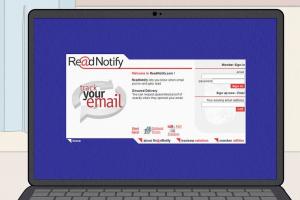Unmasking the Watchful Eye: How to Check if You Are Under Surveillance

-
Quick Links:
- Introduction
- Understanding Surveillance
- Types of Surveillance
- Signs You Are Under Surveillance
- How to Check for Surveillance
- Tools for Surveillance Detection
- Case Studies
- Expert Insights
- Legal Aspects of Surveillance
- FAQs
- Conclusion
Introduction
In an age where privacy seems to be diminishing, understanding how to determine if you are under surveillance has become increasingly crucial. Whether it's for personal safety, data protection, or simply to ensure peace of mind, knowing the signs of surveillance and the methods to detect it can empower you to take action. This comprehensive guide will walk you through the nuances of surveillance, its various forms, and how to check if you are being watched.
Understanding Surveillance
Surveillance is the close observation of a person or group, often used to gather information for various purposes, including security, law enforcement, and even corporate espionage. It can take many forms, from physical observation to digital tracking.
Why is Surveillance Used?
- Security: To protect individuals or property.
- Law Enforcement: To gather evidence for investigations.
- Corporate Espionage: To monitor competitors.
- Personal Reasons: To keep an eye on loved ones or suspicious individuals.
Types of Surveillance
1. Physical Surveillance
This involves someone physically following or observing you. It can include private investigators or even stalkers.
2. Electronic Surveillance
Using devices like cameras, microphones, or GPS trackers to monitor a person’s activities.
3. Digital Surveillance
Involves monitoring online activities through cookies, tracking software, and social media monitoring.
4. Government Surveillance
Conducted by government agencies for national security, often under legal frameworks.
Signs You Are Under Surveillance
Recognizing the signs of being under surveillance is the first step in taking action. Here are some common indicators:
- Feeling as though you are being watched.
- Noticing unfamiliar vehicles parked near your home or workplace.
- Seeing the same individuals in different locations frequently.
- Experiencing unusual technical glitches with your devices.
- Receiving unsolicited calls or messages from unknown numbers.
How to Check for Surveillance
Now that you are aware of the signs, here is a step-by-step guide to check if you are under surveillance:
Step 1: Conduct a Visual Inspection
Look around your home and workplace for hidden cameras or recording devices:
- Check common areas like living rooms, bedrooms, and bathrooms.
- Inspect smoke detectors, air purifiers, and other electronic devices.
- Use a flashlight to look for lens reflections.
Step 2: Use a RF Detector
Radio Frequency (RF) detectors can help identify wireless surveillance devices. Walk around your space with the detector on, watching for signals.
Step 3: Review Your Digital Footprint
Examine your online accounts and devices for unexpected activity:
- Check for unknown logins or devices accessing your accounts.
- Review your app permissions to ensure nothing suspicious is installed.
Step 4: Talk to a Professional
If you suspect you are under surveillance, consider hiring a professional investigator who specializes in surveillance detection.
Tools for Surveillance Detection
There are several tools available for detecting surveillance:
- RF Detectors: For detecting wireless cameras and microphones.
- Camera Lens Detectors: Specifically designed to find hidden cameras.
- Smartphone Apps: Some apps can detect unusual network traffic or unauthorized access.
Case Studies
Real-world examples of surveillance detection can provide valuable insights:
Case Study 1: The Corporate Spy
A tech company suspected an employee was leaking confidential information. After conducting a thorough investigation, they found a hidden camera placed by a rival company to monitor employee meetings.
Case Study 2: Personal Safety
A woman felt she was being stalked and decided to inspect her apartment. She discovered a hidden camera in her smoke detector, allowing her to take immediate action.
Expert Insights
Experts recommend regularly auditing your personal space and digital devices:
"Being proactive about your privacy is crucial in today's digital age. Regular checks can help you stay one step ahead of potential threats." - Jane Doe, Privacy Advocate
Legal Aspects of Surveillance
Understanding the legal landscape surrounding surveillance is essential. In many jurisdictions, unauthorized surveillance is illegal. Here are some legal considerations:
- Know your rights regarding privacy and surveillance.
- Document any suspected surveillance activities for legal action.
FAQs
1. How can I tell if my phone is being tapped?
Look for unusual battery drain, unexpected noises during calls, or unfamiliar apps installed.
2. Is it legal to install cameras in my home?
Generally, yes, but ensure you follow local laws regarding privacy and consent.
3. What should I do if I find a hidden camera?
Remove it if safe, document the discovery, and report it to authorities.
4. Can Wi-Fi cameras be hacked?
Yes, if not secured properly. Use strong passwords and enable encryption.
5. How often should I check for surveillance devices?
Regularly, especially if you feel your privacy is compromised.
6. Are there apps that can detect hidden cameras?
Yes, several apps can scan for hidden cameras and network intrusions.
7. What are the signs of being followed?
Repeatedly seeing the same vehicle or person in various locations can be a sign.
8. How can I protect my digital privacy?
Use strong passwords, enable two-factor authentication, and regularly monitor your accounts.
9. Is it possible for someone to spy on me without my knowledge?
Yes, with modern technology, covert surveillance is unfortunately possible.
10. What legal actions can I take against unauthorized surveillance?
Consult with a lawyer to explore options like reporting to law enforcement or filing a civil suit.
Conclusion
In a world where surveillance is increasingly common, being aware of your surroundings and knowing how to detect potential monitoring can help safeguard your privacy. By following the steps outlined in this guide and staying informed about your rights, you can take control of your personal safety and security.